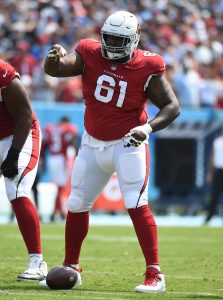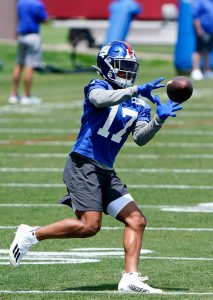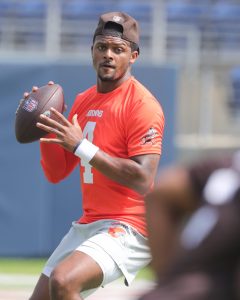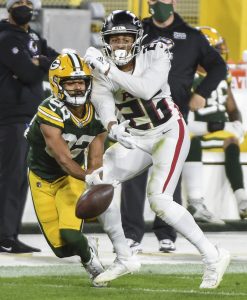The Buccaneers allowed depth players Richard Sherman and Pierre Desir to walk in free agency this offseason, but held onto their most important free agent cornerback when they re-signed Carlton Davis to a three-year, $45MM contract. Besides the departures of Sherman and Desir, and the rookie depth additions that counteract them, the room looks quite the same as it did last season. If the position group can stay healthy, how does the depth chart play out with most of last year’s contributors returning? Let’s take a look. 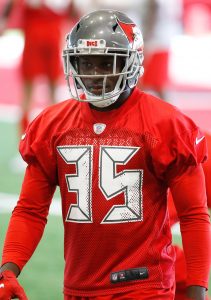
Davis is the only for sure starter at cornerback for Tampa Bay. He’s been a consistent starter since getting drafted in the second round in 2018, but really broke out in his second year of NFL football. After a rookie season that saw him break up only 4 passes, Davis exploded in coverage recording 19, 18, and 11 passes defensed in each year after. Davis has six interceptions in his first four seasons (four in 2020, alone), but his 52 total passes defensed says plenty about his ability to make plays on the ball. He’ll enter the season as the team’s No. 1 cornerback, with questions surrounding who will be No. 2.
Jamel Dean is likely the top prospect to start opposite Davis in base formations. He or his competition for that second spot, Sean Murphy-Bunting, would still see plenty of the field as the third cornerback, as the Buccaneers primarily utilize a nickel defense, but, when utilizing only four defensive backs, Dean is currently the favorite to be on the field. Not only are they competing for a spot atop the depth chart, but, considering both were members of Tampa Bay’s 2019 draft class, they will also be striving to earn a new payday like Davis’ in their contract years.
Dean didn’t enter the 2021 NFL season as a starter, but, after an elbow injury sent Murphy-Bunting to injured reserve, Dean took over and made the most of his opportunity. Dean has consistently missed at least two games every season with injury, but, considering the extended time Davis and Murphy-Bunting missed last season, two games doesn’t seem so bad. With 33 passes defensed, Dean has shown the ability in coverage to stay close and make plays on the ball. The biggest downside to his game is that Dean hasn’t quite been able to convert those plays into turnovers, only totaling five interceptions over three seasons. Dean possesses ideal size and speed for the position and was even graded one slot above Davis last season according to Pro Football Focus’ position rankings (subscription required).
Murphy-Bunting was drafted one round earlier than Dean and, so far, his opportunities have reflected that. Last year was the first that saw Murphy-Bunting miss time due to injury, but that doesn’t make Dean’s impressive showing in his absence any less inimical to Murphy-Bunting’s starting role. The injury last season really limited Murphy-Bunting, as PFF graded him out as the 90th cornerback in the NFL, compared to Dean and Davis’s 20th and 21st, respectively. Murphy-Bunting has shown the player he can be when healthy, though, and if that version of him shows up for competition, he may find his way back into a solidified starting role. As a rookie, Murphy-Bunting showed off his ball skills with three interceptions. While he only has one pick in the next two regular seasons, he was able to reel in an interception in three-straight playoff games in 2020. Which version of Murphy-Bunting the Buccaneers get this season will largely affect the starting roles, but, as mentioned above, Tampa Bay’s nickel defense should allow plenty of snaps for both Dean and Murphy-Bunting.
Now Tampa Bay does have another option. If either Dean or Murphy-Bunting struggle coming into the season, the Buccaneers could move Logan Ryan, whom they signed in the offseason to fill in the free safety role left vacant by Jordan Whitehead‘s departure, back to his natural position of cornerback. Ryan hasn’t played cornerback since 2019, but he serves as a more-than-qualified “break glass in case of emergency” option.
Behind the top three corners, Tampa Bay returns Ross Cockrell, Dee Delaney, and Rashard Robinson. Cockrell is a journeyman cornerback with plenty of starting experience with his past teams. He and Delaney filled in a bit as starters when Davis and Murphy-Bunting were out last year, but, over the course of the season, Cockrell proved the most effective backup cornerback. Delaney made the most of his defensive opportunities getting an interception and two passes defensed in five games of extended action on defense. Delaney is a core special teamer, though, and really only serves as a depth piece on defense. Similarly, though Robinson has starting experience from his time in San Francisco, he mainly served as a reserve cornerback last year in Tampa Bay.
Rookie fifth-round pick Zyon McCollum and undrafted rookies Kyler McMichael and Don Gardner round out the roster for Tampa Bay at cornerback. They may be able to fight their way onto the 53-man roster by proving their worth on special teams, but McCollum is probably the only rookie here who may find his way into the cornerback rotation as a depth piece.
Tampa Bay’s nickel look should field, essentially, four cornerbacks, with Davis, Dean, Murphy-Bunting, and Ryan all surrounding starting strong safety Antoine Winfield Jr. Dean and Murphy-Bunting will compete throughout the preseason to determine who stays on the field in base formations. Cockrell and Delaney will likely continue their role as key backups. Robinson may find himself competing with McCollum for a roster spot, with McMichael and Gardner attempting to beat the odds. The Buccaneers know they can achieve success with this roster of cornerbacks, based on its similarities to last season, but just how they choose to employ their corners will determine how much success they can achieve.
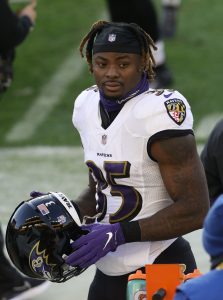 The prospect of the Ravens holding Dobbins out in Week 1 and perhaps sitting him for multiple September contests is likely to be in play, Ian Rapoport of NFL.com notes (video link). Dobbins disagreed with Rapoport’s situational assessment, indicating he will “damn sure” be ready for Baltimore’s opener (Twitter link).
The prospect of the Ravens holding Dobbins out in Week 1 and perhaps sitting him for multiple September contests is likely to be in play, Ian Rapoport of NFL.com notes (video link). Dobbins disagreed with Rapoport’s situational assessment, indicating he will “damn sure” be ready for Baltimore’s opener (Twitter link).